MercoPress. South Atlantic News Agency
Tag: Nicolas Dujovne
-
Wednesday, May 9th 2018 - 20:19 UTC
US Dollar rises: Uruguay behind Argentina
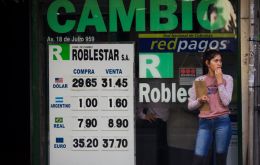
After several days up in Argentina, the devaluation of the Argentine peso and the rise of the US dollar have had some impact on the other side of the River Plate, where the exchange houses of downtown Montevideo marked on Wednesday the value of the currency up to 31,70 Uruguayan pesos per dollar, a rise of 2.08% compared to Monday —the highest in five years—. For the Uruguayan government, the country follows the global trend and calls for calm, beyond the noise generated in Argentina, which is beginning a dialogue between the Finance Minister, Nicolás Dujovne, and the International Monetary Fund (IMF) in Washington.
-
Wednesday, May 9th 2018 - 07:32 UTC
Peso storm: Argentina requests a US$ 30bn precautionary credit from IMF

Argentina asked the International Monetary Fund for financing to help stem a run from the Peso to the US dollar that is sparking a surge in interest rates and threatening to derail the country's economic recovery. The sum requested is estimated between 25 and 30bn dollars, 500% Argentina's IMF quota and could be disbursed in two forms, a flexible credit line or a precautionary credit line.
-
Tuesday, May 8th 2018 - 06:57 UTC
Argentine Peso: the worst of the storm seems to be over...for the time being
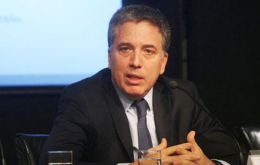
The Argentine Peso closed slightly weaker on Monday, though analysts remained optimistic the government and central bank had curbed a run on the currency with a massive rate hike and lower fiscal deficit target last week. . The local currency opened stronger on Monday but closed down 0.41%, at 21.97 per U.S. dollar. The Merval stock index ended down 3.43% and traders said investors remained cautious.
-
Saturday, May 5th 2018 - 07:24 UTC
Argentina hikes benchmark rate to 40%, easing pressure on the Peso but not on inflation
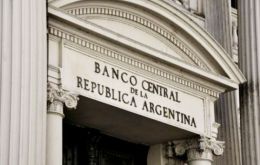
Argentina's Central Bank on Friday hiked its benchmark interest rate to 40% to support the peso, the third such hike in just over a week and one day after the currency plunged in value. Following the decision, the peso -- which has lost more than 10% of its value in the past month -- opened 6% higher against the dollar.
-
Tuesday, April 17th 2018 - 08:14 UTC
Argentina's inflation hard to beat: “inflation has to fall a lot in May”
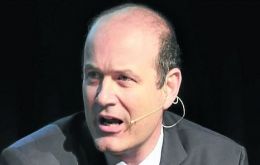
Argentina’s central bank would raise interest rates if inflation does not fall “a lot” beginning in May to a level consistent with its 2018 target for a 15% rise in consumer prices, central bank Governor Federico Sturzenegger said on Monday.
-
Monday, March 19th 2018 - 09:28 UTC
Germany and Argentina champions of international free trade at G20 meeting
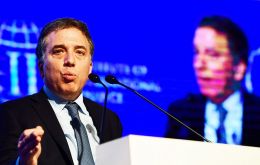
Germany and Argentina want to uphold a pledge to keep international trade free at a summit of the world’s 20 largest economies in Buenos Aires this week, the countries’ finance ministers said on Sunday.
-
Saturday, January 20th 2018 - 09:21 UTC
Argentina posted a primary fiscal deficit of 3.9% of GDP during 2017
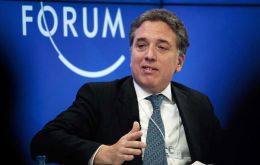
Argentina posted a primary fiscal deficit worth 3.9% of GDP in 2017, below its 4.2% goal and the 4.6% figure posted in 2016, Treasury Minister Nicolas Dujovne told reporters. He said the government’s 2018 target for a primary fiscal deficit remained at 3.2% of GDP, with targets of deficits worth 0.6% in the first quarter, 1.6% in the second quarter and 2.2% in the third quarter.
-
Friday, December 29th 2017 - 09:32 UTC
Argentina increases inflation targets for 2018/19, closer to private estimates
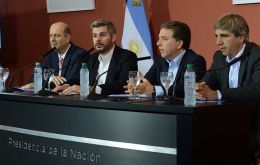
Argentina changed its inflation target for 2018 to 15%, up from the central bank’s previous goal of 8-12%, Treasury Minister Nicolas Dujovne said on Thursday, raising expectations for interest rate cuts. The government will postpone by one year its goal of lowering inflation to 5%, pushing it back to 2020, Dujovne said.
-
Friday, November 24th 2017 - 09:43 UTC
Argentine minister admits inflation will end 2017 at 21%

Argentina's inflation rate will likely end the year above 21%, Treasury Minister Nicolas Dujovne told reporters on Thursday. The government previously estimated that consumer prices in Latin America's third-biggest economy would rise 17% in 2017.
-
Wednesday, November 1st 2017 - 08:46 UTC
Argentina unveils plan to slash corporate income taxes to promote investment

Argentina plans to cut corporate income taxes to 25% by 2021 for companies that reinvest profits, it said on Tuesday, part of a wide-reaching tax reform bill intended to accelerate investment in Latin America's no.3 economy. The bill, which would slash taxes for companies willing to reinvest in Argentina from 35%, will be sent to Congress in the coming days, Treasury Minister Nicolas Dujovne said.
